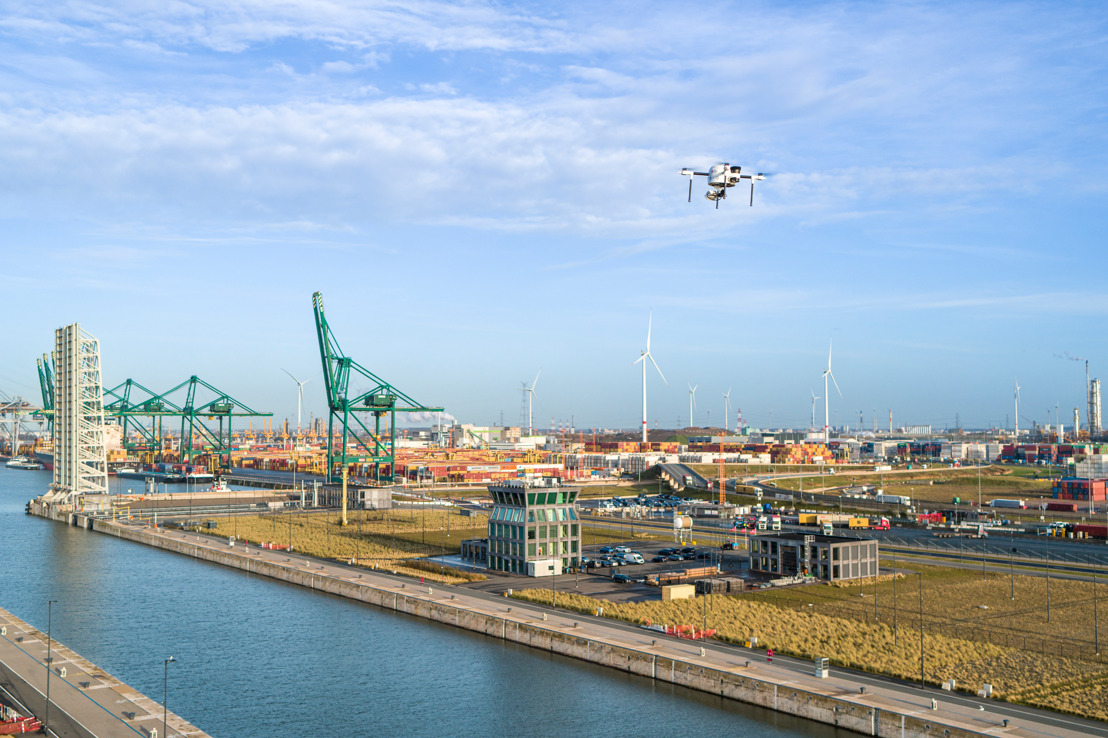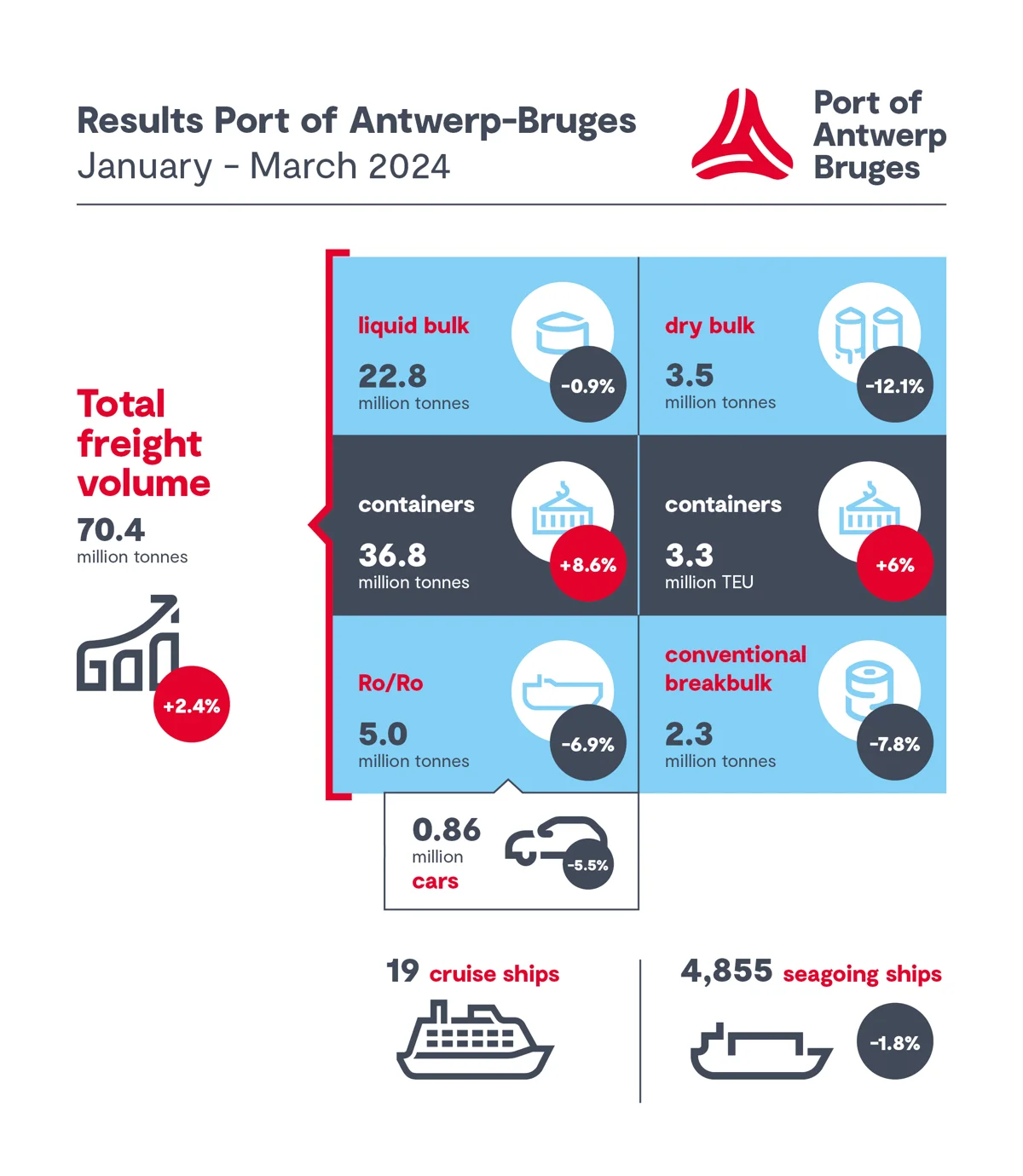
Port of Antwerp-Bruges handles over 3.2 million TEUs in first quarter
ANTWERP : The Port of Antwerp-Bruges said that despite the ongoing complexities in geopolitics and macroeconomics, its volume growth, primarily driven by a resurgence in container throughput, highlights the port resilience.
Following a global slowdown in demand for container shipping in 2023 due to economic uncertainties and inflation, container throughput began to rebound in February at the Belgian port, with March witnessing the highest monthly throughput since March 2021.
This translated to an 8.6% increase in total container throughput in tonnes and a 6% rise in TEUs (3,287,000 TEUs) compared to the first quarter of 2023. The Port of Antwerp-Bruges also saw its market share in container handling within the Hamburg-Le Havre Range increase by 0.3 percentage points to 29.9%.
While throughput volumes of conventional general cargo experienced a decrease of 7.8% compared to the same period last year, they showed a 6.9% growth compared to the final quarter of 2023.
The throughput of iron and steel remained stable, with incoming flows increasing by 1.4% and outgoing flows declining by 3.8%. However, most other goods witnessed a decline in throughput compared to the first quarter of 2023.
Also, in the first quarter of this year, the Port of Antwerp-Bruges handled a total cargo throughput of 70.4 million tonnes, marking a 2.4% increase compared to the corresponding period last year.
Moreover, in the first quarter of 2024, roll-on/roll-off traffic experienced a 6.9% decrease. Persistent congestion at RoRo terminals contributed to a decline in throughput for all transport equipment by 9%. This decrease primarily stems from reduced throughput of used cars (-52.5%), high & heavy cargo (-25%), trucks (-23.9%), and new cars (-5.5%). However, throughput of unaccompanied cargo (excluding containers) transported on RoRo vessels saw a modest increase of 1.7%.
“The fact that, as a world port, we are caught up in continuing challenges was once again highlighted in the last quarter. The Red Sea unrest obliged container shipping companies, for security reasons, to divert their routes via the Cape of Good Hope on East-West routes, resulting in disruptions to logistics chains and irregular arrivals of container ships. This meant that all parties involved had to adapt, but diverted routes soon became the ‘new normal’. The fact that we can once again achieve growth despite everything proves our resilience in unpredictable times,” stated Jacques Vandermeiren, CEO of Port of Antwerp-Bruges.

While throughput to and from the United Kingdom decreased by 4.4%, this was counterbalanced by increases in throughput to and from Spain and Portugal (+31.5%), Ireland (+6.4%), and Scandinavia (+13.5%).
“These figures and the still growing market share of the container segment compared to the other ports in the Hamburg-Le Havre range are undeniable proof of the added value of the merger and the two complementary port platforms. As a merged port, we continue to take essential steps in the energy transition, together with industry, towards a climate-neutral port by 2050. The shore power installation that will be operational at our cruise terminal in Zeebrugge by 2026 is a great example of that,” commented Dirk De fauw, Vice-President of Port of Antwerp-Bruges.
